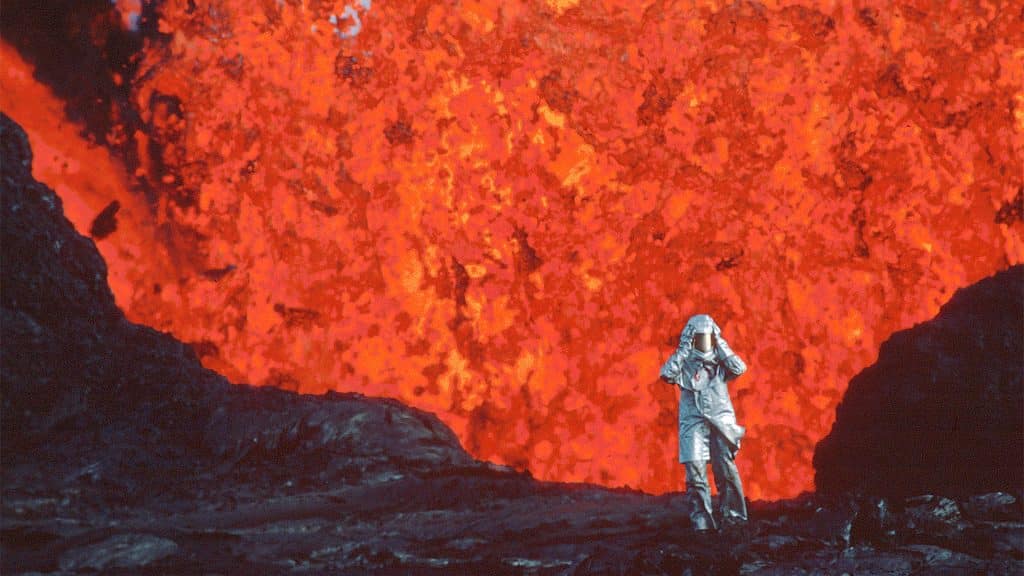
By Tim Kroenert
22 August 2022
Rarely has the numinous in the natural world been so profoundly expressed. Fire of Love’s images of slow-roiling lava lakes, of rainfalls of hot rocks, of driving torrents of scalding ash are both terrifying and awe-inspiring. The authors of this footage, volcanologists Katia and Maurice Krafft, resisted classifying the monoliths who produce these phenomena, beyond the broad categories of gentle “red” and violent “grey” volcanoes. Each is an individual, alive with Earth’s blood and beating heart.
In the 1970s and 80s the Kraffts were the rock stars of their field. Maurice was a mainstay of French TV, and they would tour the world giving lectures. Like the leads of a famous band, they complemented, and often frustrated each other. Maurice was a risk-taker, obsessed with the big, the spectacular. Katia was drawn to the stories told by tiny details. A sequence where Maurice rides a rubber dinghy onto a lake of sulphuric acid as his chagrined wife remains on shore epitomises their differences.
Yet both were bold. The film takes on the air of myth when we see them dancing on the rim of a fire-spewing crater. Mythic indeed, Miranda July’s lyrical narration may as well be from some centuries-old fable. She supplies multiple origin stories for how Katia and Maurice met. The one agreed factor is it was their shared love of volcanoes that bound them. So intimately entwined, in mind and spirit, were they with volcanoes that director Sara Dosa describes their marriage as a love triangle.
The Kraffts’ desire to be in such proximity to their subjects would ultimately lead to their deaths. The temptation then is to describe their story as a tragedy — but that wouldn’t be right. In their work they embraced danger willingly, and in so doing laid foundations for greater understanding that would save lives. Besides, Maurice is heard to say he’d rather live briefly and intensely, than long and mundanely. He may as well be 100, he said, such was the magnitude of his experiences.
Katia too is content to die by Maurice’s side in the pursuit of their shared vocation. This is indeed what happened, in 1991, as these so-called “weirdo” scientist and lovers stared down Japan’s mighty Mount Uzen. Both were still in their 40s. Sad, sure, but no doubt if you could ask him Maurice would be philosophical. The human eye cannot see in geological time, he once said, and a human lifespan is nothing in the eyes of a volcano.
In cinemas now.
For more faith news, follow The Melbourne Anglican on Facebook, Twitter, or subscribe to our weekly emails.






